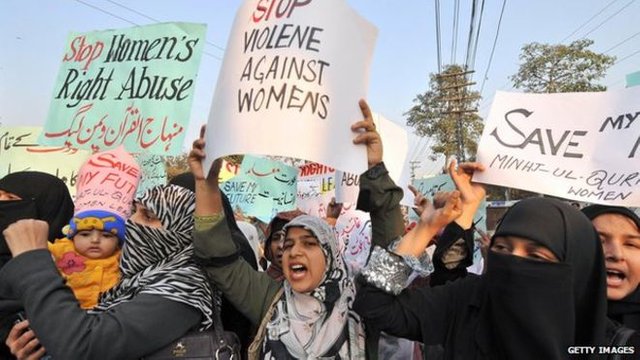Is Western Feminism for White Middle Class Women? CULTURAL LENS

The last lens explored is the cultural lens. This lens is a more nuanced one and does not only incorporate culture but also religion. Western feminism has its roots in liberal democracy. According to Ramazanoglu (1989, p. 140), “feminism is largely conceived within western cultures during the period in which capitalism came to dominate and transform not only the economies but also the cultures of other societies.” This implies that western culture is influenced heavily by capitalism and wants to assert itself over other cultures. Ramazaonglu (1989, p. 138) continues by saying that “the sources of division between women such as class and racism cannot be tackled without also taking into account both how women are divided by beliefs, customs, religion and sexuality-.”
Culture has always been a malleable term that is often not seen in relative terms. According to Mahmood (2001), from the perspective of western liberalism, there is a vexed relationship between feminism and religious traditions. They are mutually exclusive, and this idea is also supported by western feminism. Western feminism concerns itself with “liberating” women from religious customs and traditions and oppressive elements of Other cultures. Mahmood (2011) concludes that in the general opinion “feminism is intricately linked with secular politics.”
Continuing with the cultural lens, western feminism is not merely focused on the concerns of white middle-class women, but it also acts as a justification or premise for certain foreign interventions from the West. This view is supported by Bunting (2011), who argues that western feminism was used as a narrative to justify the US-led coalition in Afghanistan. Syed and Ali (2011) explore this idea further. They argue the United States used women’s rights, which are a western construct in itself, to justify the “saving of these women from the Taliban.” McElroy argues that white women in the West treated Muslim women as a homogenous category that needed saving from their own culture (Syed & Ali, 2011).
The creation of the “straw Muslimah” served as a scapegoating tool to exert Western control over these regions. The “straw Muslimah” became the poster child of western intervention in Afghanistan (Al-Sibai, N, 2015). This sentiment had increased immensely post 9/11 where Islamophobia became a central component of western societies. Russo looks at the Feminist Majority Foundation (FMF) in the United States and other western feminist institutions and argues that their campaigns had the actual aim and concern of US imperialism and militarism (Syed & Ali, 2011). Western feminism’s concerns with culture and religion in Other countries align with those of western imperialism.
Congratulations @fleurdb! You have completed the following achievement on Steemit and have been rewarded with new badge(s) :
Click on the badge to view your Board of Honor.
If you no longer want to receive notifications, reply to this comment with the word
STOPTo support your work, I also upvoted your post!
Do not miss the last post from @steemitboard:
SteemitBoard World Cup Contest - France vs Belgium
Participate in the SteemitBoard World Cup Contest!
Collect World Cup badges and win free SBD
Support the Gold Sponsors of the contest: @good-karma and @lukestokes